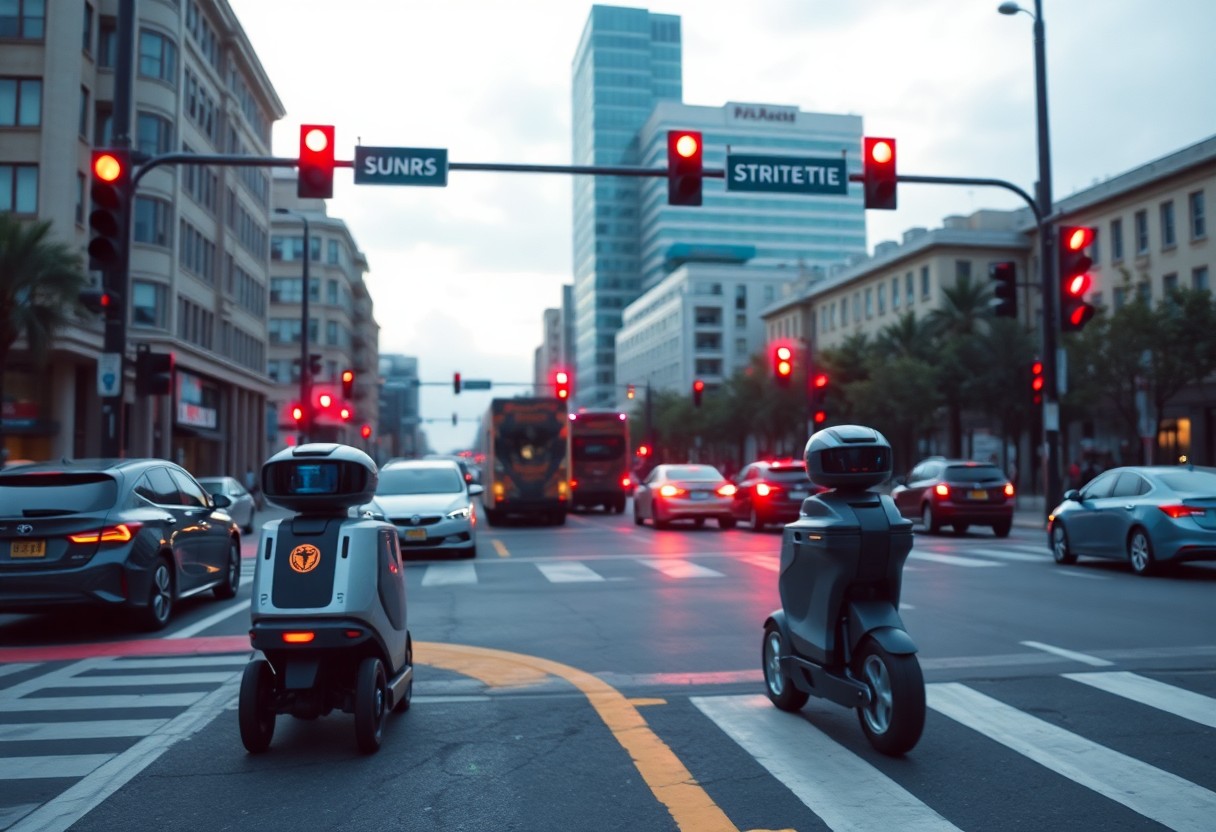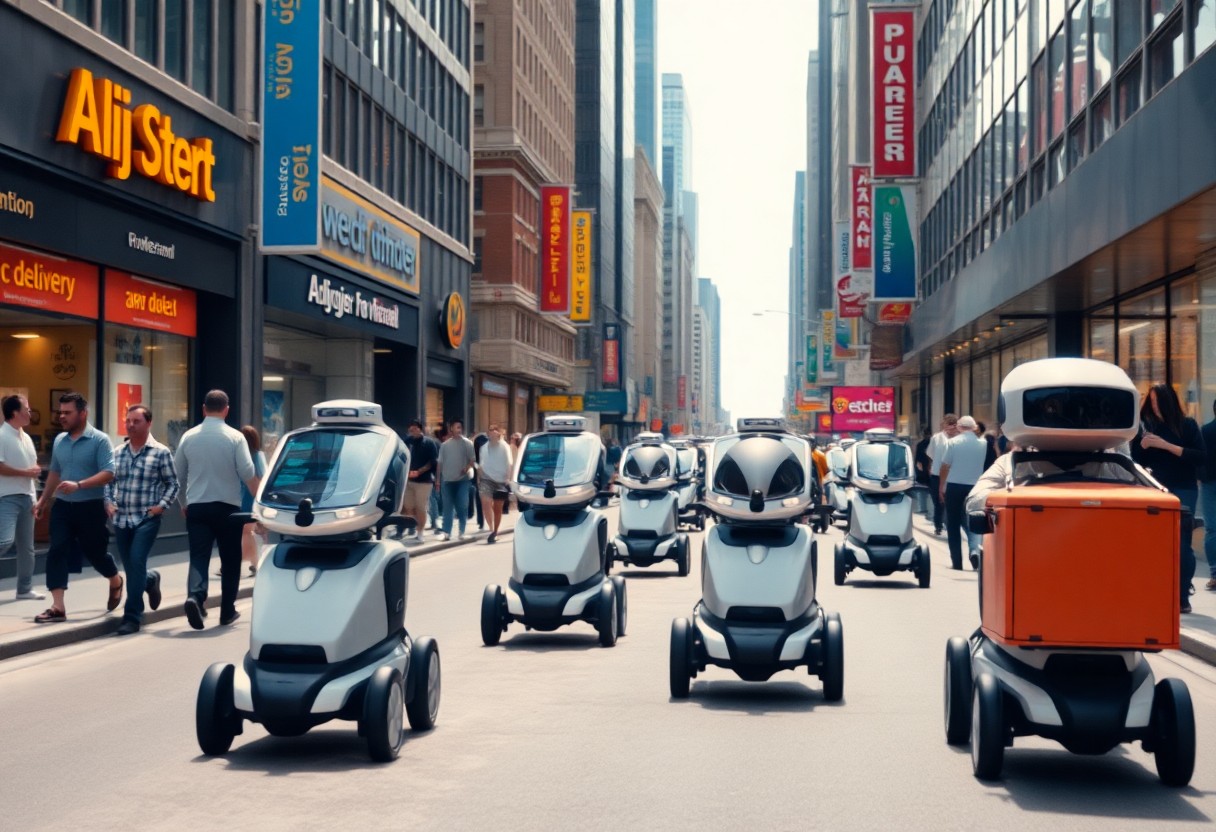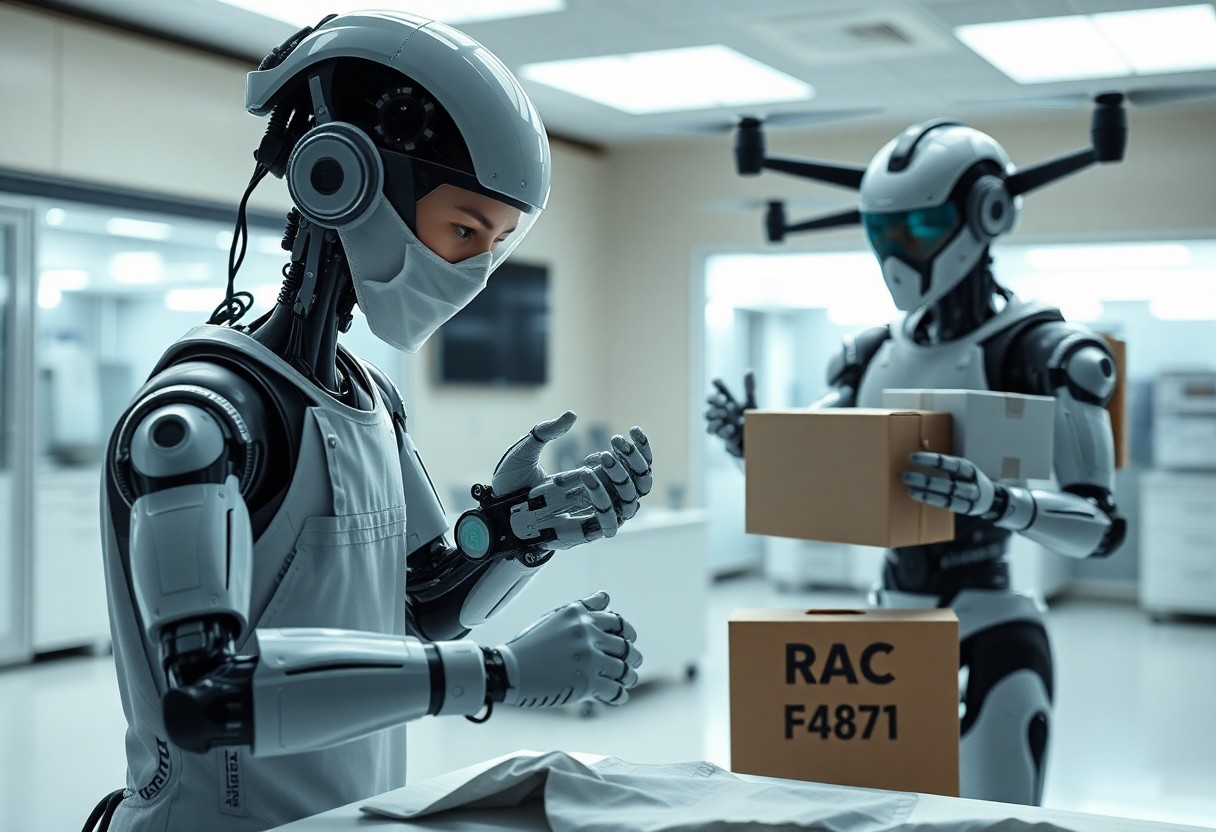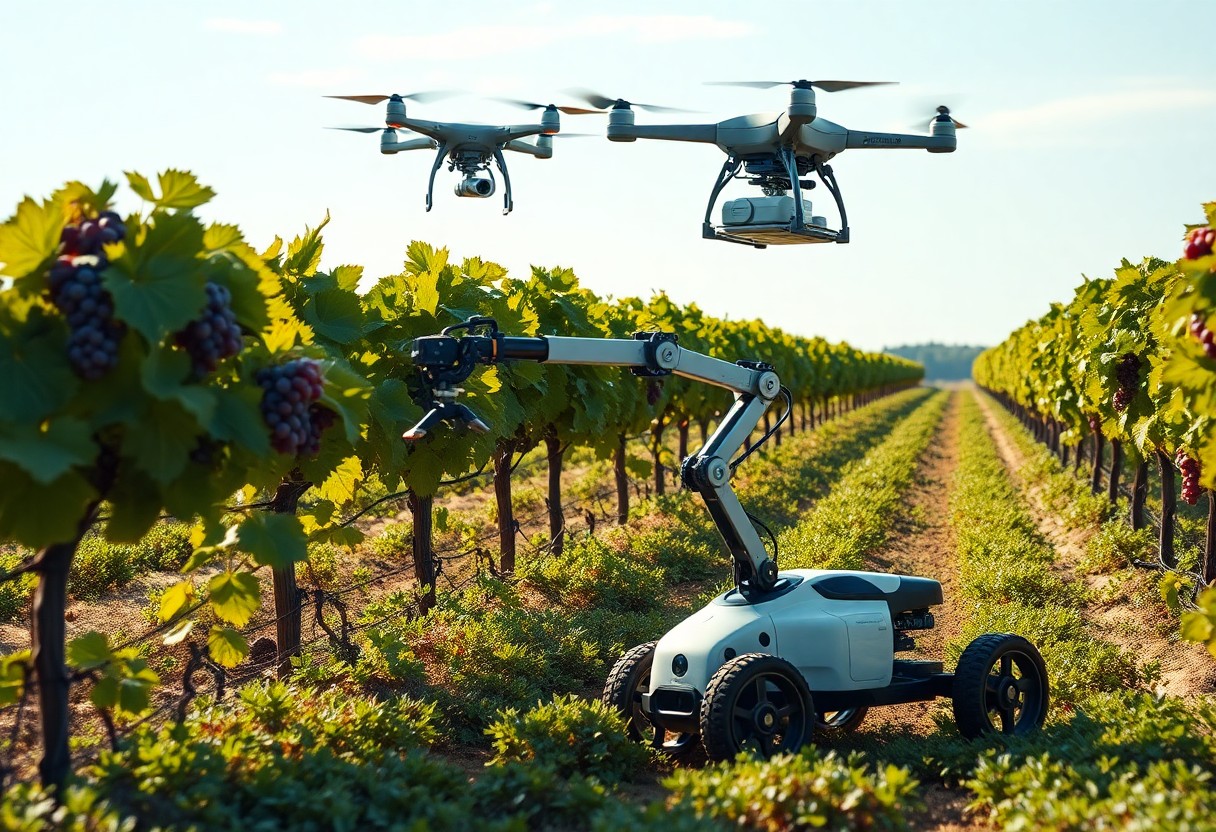Urban areas are rapidly embracing autonomous delivery robots as a solution to modern logistical challenges. These innovative machines enhance convenience by navigating city streets to deliver goods directly to your doorstep. As you encounter these robots in your neighborhood, understanding their technology and impact on urban life will help you navigate this evolving landscape. Exploring the benefits and potential challenges they pose will equip you with valuable insights into the future of urban delivery systems.
Overview of Autonomous Delivery Robots
Autonomous delivery robots represent a transformative shift in urban logistics, providing efficient and cost-effective solutions for last-mile delivery. These robots navigate complex cityscapes to transport goods, enhancing convenience for consumers and reducing strain on traditional delivery systems. Their integration into urban environments involves navigating sidewalks, crosswalks, and varying terrains while adhering to local regulations and traffic patterns.
Definition and Technology
An autonomous delivery robot is defined as a robotic system designed to transport goods from one location to another without human intervention. Equipped with advanced sensors, cameras, and artificial intelligence algorithms, these robots can recognize obstacles, identify routes, and adapt to changing environments. The underlying technology relies on machine learning and real-time data processing to ensure safe and efficient navigation.
Types of Delivery Robots
Delivery robots can be categorized based on their design, function, and operational environment. Common types include ground-based, aerial, and hybrid robots, each tailored to specific delivery scenarios. Ground-based robots operate on sidewalks and paths, aerial drones traverse the airspace for rapid delivery, while hybrid models combine features of both. Understanding these distinctions helps you appreciate their diverse applications in urban settings.
- Ground-based robots move along sidewalks and streets.
- Aerial drones deliver packages from the air, bypassing traffic.
- Hybrid robots use wheels and rotors for versatile navigation.
- Cart-based systems are larger and carry bulkier goods.
- Temperature-controlled bots ensure food delivery maintains quality.
| Type | Functionality |
|---|---|
| Ground-based | Navigate sidewalks, deliver small parcels |
| Aerial | Fly to deliver packages short distances |
| Hybrid | Utilize both ground and aerial systems |
| Cart-based | Transport larger, bulk deliveries |
| Temperature-controlled | Maintain specific temperatures for sensitive goods |
Delivery robots are tailored to the unique demands of urban logistics, with various designs optimizing functionality for specific delivery methods. Ground-based robots excel in mixed pedestrian environments, while aerial models target urban centers needing quick access. Some operations deploy specialized systems that monitor cargo conditions, like temperature, enhancing service quality. Recognizing the diversity in robot capabilities is necessary for understanding their roles in the logistics landscape.
- Different robots cater to specific delivery needs.
- Innovations continually enhance efficiency and reliability.
- Investments in technology improve navigation and safety.
- Urban regulations guide the deployment of these robots.
- Collaboration with retailers ensures a broad marketplace presence.
| Type | Application |
|---|---|
| Retail delivery | Direct package delivery from stores to consumers |
| Food delivery | Transport meals while preserving quality |
| Medical supplies | Deliver medications within hospitals and clinics |
| Parcel services | Efficiently manage small package drop-offs |
| Grocery systems | Facilitate delivery of online grocery orders |
Applications in Urban Areas
Autonomous delivery robots are transforming various sectors within urban environments, making last-mile deliveries faster, more efficient, and cost-effective. Their applications extend from retail to food services, impacting how goods reach consumers and reshaping traditional logistical processes.
Retail and E-commerce
In retail and e-commerce, autonomous delivery robots facilitate the seamless transfer of products from warehouses to consumers. These robots, capable of navigating crowded city streets, allow businesses to offer same-day deliveries, enhancing customer satisfaction. Retailers like Walmart have already tested these robots in select markets, showing significant potential in reducing delivery times and costs.
Food Delivery Services
Food delivery services are rapidly adopting autonomous robots, providing an innovative solution to urban dining logistics. By utilizing these robots, companies can enhance order accuracy and delivery speeds, addressing the rising demand for convenience in the food industry. Major platforms like DoorDash are exploring robotic delivery options, signaling a shift towards automated solutions in urban food logistics.
The integration of autonomous delivery robots in food services not only mitigates some of the challenges associated with human delivery personnel, such as labor shortages and rising costs, but it also caters to consumer demands for quicker delivery. For instance, companies like Starship Technologies report that their robots can deliver food within a 5-mile radius in under 30 minutes, significantly enhancing the customer experience. As cities continue to adapt infrastructure to accommodate these innovations, you’ll see even more widespread adoption of these robots, making delivery more efficient than ever before.
Benefits of Autonomous Delivery Robots
Autonomous delivery robots offer numerous advantages that enhance urban logistics. They streamline the last-mile delivery process, reduce operational costs, and cater to growing consumer demand for immediacy. Additionally, these robots lower the need for human drivers, mitigating labor shortages in the delivery industry. As you explore their potential, you’ll discover that their integration fosters economic growth and improves overall urban efficiency.
Efficiency and Speed
You can expect significant improvements in delivery efficiency and speed with autonomous robots. Capable of navigating complex urban landscapes, these robots ensure swift, contactless delivery of packages. Their ability to operate around the clock means your orders can arrive more promptly, meeting the fast-paced demands of today’s consumers.
Environmental Impact
Deploying autonomous delivery robots contributes positively to the environment by reducing carbon footprints. These electric-powered units minimize reliance on traditional delivery vehicles, which often contribute to air pollution and traffic congestion. You benefit from cleaner air in urban areas as more robots replace gas-powered transportation methods.
Research shows that a single autonomous robot can replace multiple traditional delivery vehicles, drastically curbing greenhouse gas emissions. For example, cities implementing fleets of these robots have reported reductions in traffic congestion, leading to fewer idling vehicles and lower energy consumption. Additionally, autonomous robots promote last-mile delivery efficiency, resulting in less overall travel and improved urban air quality. As municipalities evolve towards sustainable logistics solutions, you’ll witness a greener urban ecosystem fostered by these innovative technologies.

Challenges and Limitations
Despite their potential, autonomous delivery robots face several challenges in urban settings that hinder widespread deployment. Issues like unpredictable traffic patterns, varying road conditions, and pedestrian interactions complicate navigation. Furthermore, technical malfunctions and limitations in artificial intelligence can impede efficiency. Access to building entrances and dealing with stairs or uneven surfaces can also restrict delivery capabilities. Addressing these challenges is necessary for optimizing their operation in complex urban environments.
Regulatory and Legal Issues
Regulatory frameworks currently lag behind the rapid development of autonomous delivery technology. Many cities have not established clear guidelines concerning the safe operation of these robots on public streets and sidewalks. This lack of regulation leads to inconsistent policies that may limit operational hours, specify designated lanes, or require permits that complicate overall deployment. Navigating these legal battles is necessary for creating a smoother integration into urban logistics.
Public Perception and Acceptance
Your acceptance of autonomous delivery robots is shaped by various factors, including safety concerns, perceived reliability, and personal experiences. Some individuals welcome the innovation, viewing it as a convenience that enhances their lifestyles. Others, however, express skepticism regarding the reliability and safety of these robots in crowded urban areas, often citing potential hazards to pedestrians and interference with traffic. Establishing trust through successful deployments and addressing concerns directly are necessary for fostering a positive public perception.
Public perception significantly influences the success of autonomous delivery robots in your community. Surveys indicate that while over 60% of urban residents appreciate the convenience these robots offer, around 30% remain apprehensive about their safety and reliability. Case studies from cities that have implemented pilot programs demonstrate that transparency in operations, visible engagement with the community, and educational campaigns can alleviate concerns. For successful integration, continuous dialogue between robotics companies and the public is crucial to ensure that your fears are addressed and that you feel confident in this innovative approach to delivery.
Case Studies of Implementation
Examining various implementations of autonomous delivery robots reveals their effectiveness in urban logistics and reveals valuable insights into operational efficiency and user acceptance.
- San Francisco, CA: Starship Technologies delivered over 200,000 orders in 2022, achieving a 90% customer satisfaction rate.
- Los Angeles, CA: The Food Delivery Robot project reported a 30% reduction in delivery times and 25% cost savings on last-mile logistics.
- Washington, D.C.: Serve Robotics’ partnership with grocery chains resulted in 2,000 successful deliveries in the first quarter of 2023, highlighting robust demand.
- London, UK: Ocado’s autonomous robots completed 15,000 deliveries over 6 months, with an average delivery time of under 30 minutes.
- New York City, NY: Robot company Nuro reported operating successfully in residential areas, achieving a 97% on-time delivery rate.
Successful Deployments
Successful deployments illustrate how autonomous delivery robots can streamline logistics. With significant adoption across several cities, businesses have noticed improvements in delivery efficiency, with some reporting delivery time reductions of up to 30% and increased customer satisfaction rates approaching 90%.
Lessons Learned
Insights gained from early implementations shape future strategies for deploying these robots. Understanding user behavior, addressing regulatory hurdles, and enhancing navigation systems are pivotal for successful integration into urban environments.
Data collected from early case studies highlights patterns in user interaction and common challenges faced during deployment. Many early adopters faced regulatory obstacles that prolonged deployment timelines. Additionally, addressing concerns regarding safety and user engagement proved important. Continuous refinement of the navigation systems became necessary as urban infrastructures evolved, demonstrating that adaptability is key to harnessing the full potential of autonomous delivery solutions. Ultimately, fostering community acceptance and ensuring reliable performance are fundamental to the long-term success of these robotic systems in urban logistics.
Future Trends and Developments
As consumer expectations evolve, the future of autonomous delivery robots lies in their ability to adapt and enhance urban logistics. Refining navigation and enhancing interaction with users will lead to more seamless experiences, fostering greater acceptance and integration into daily life. By leveraging advanced AI and improving connectivity, these robots will increasingly become integral to last-mile delivery solutions.
Innovations in Technology
Your experience with delivery robots will be shaped by innovations like improved sensors, multi-modal navigation, and real-time data processing. As technology advances, robots will better integrate with existing infrastructure, avoiding obstacles and communicating effectively with pedestrians and vehicles, ensuring safety and efficiency.
Expansion into New Markets
As urban areas become saturated, your delivery robot services will expand into suburban and rural markets, addressing different logistical challenges. Companies are strategically increasing outreach to smaller towns that have less access to efficient delivery solutions, thus tapping into a new customer base and driving growth.
The expansion into new markets is fueled by a growing demand for convenience and cost-effectiveness in delivery services. Smaller towns and suburban areas often grapple with slower delivery options, making them ideal candidates for autonomous solutions. Companies are conducting pilot programs in these regions, testing capabilities and gathering feedback to refine their services. Some, like Starship Technologies, have already found success in suburban college towns, showcasing how adaptable and efficient autonomous delivery can thrive outside traditional urban environments. As these services gain traction, expect to see partnerships with local businesses to further enhance service reach and efficiency.
Summing up
With this in mind, you can see that autonomous delivery robots in urban areas offer significant advantages, such as increased efficiency and reduced traffic congestion. These robots enhance your daily life by providing quicker access to goods while minimizing environmental impact. As technology advances, it is vital for you to stay informed about local regulations and potential integrations into your community, ensuring that you can fully leverage the benefits of this innovative delivery solution.







